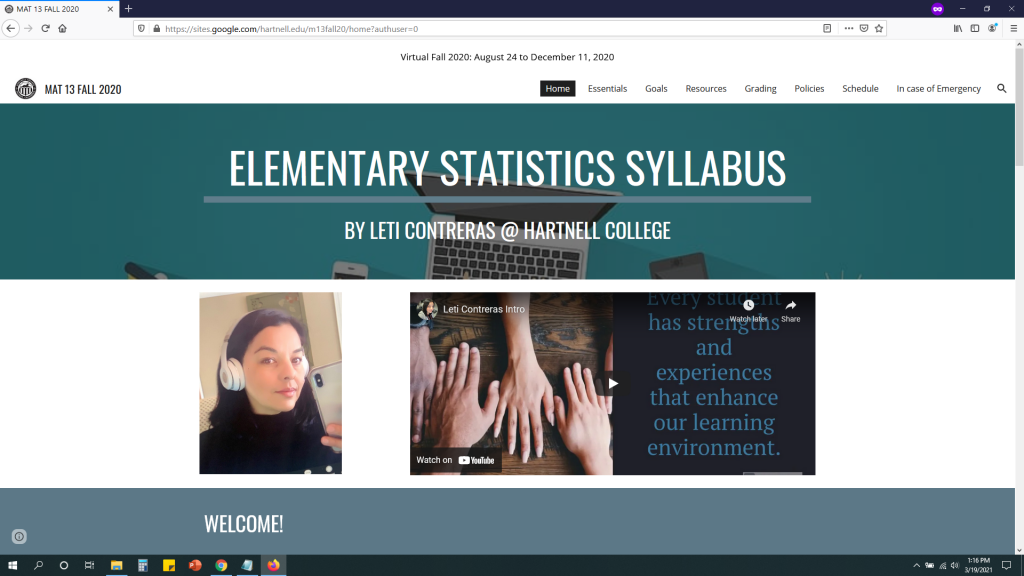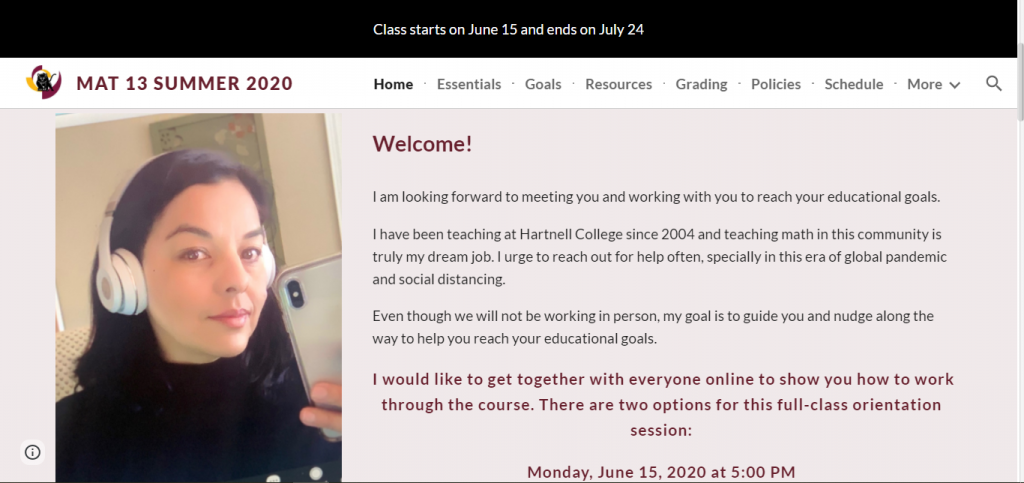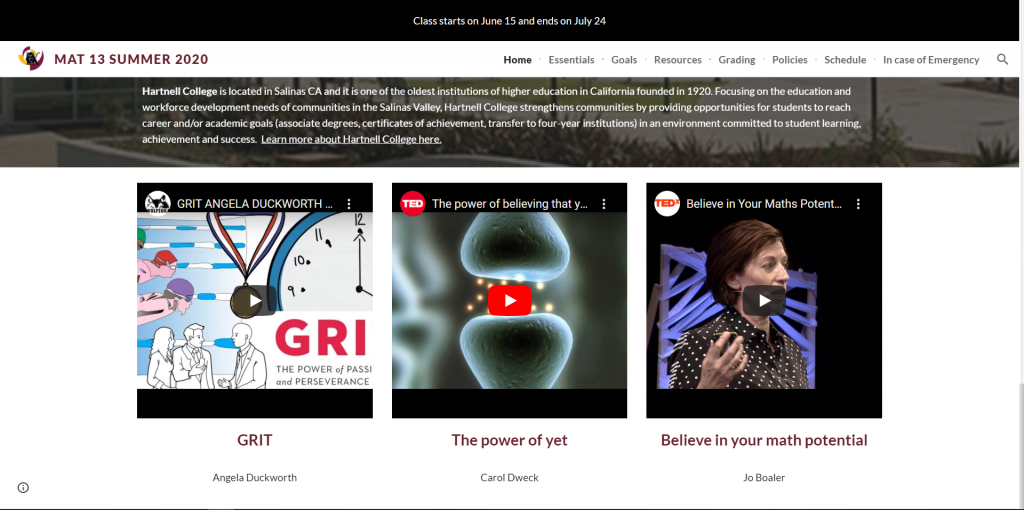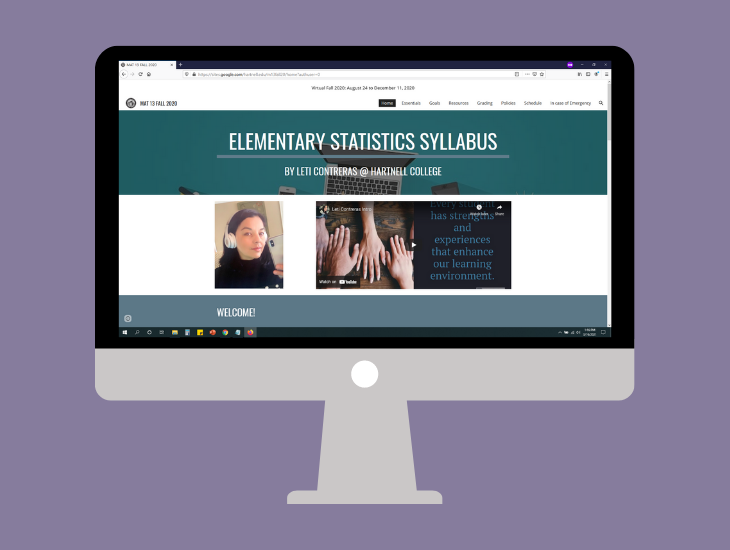The Carnegie Math Pathways From the Network blog series provides advice and lessons learned from our nationwide network of educators to benefit math educators everywhere.
Like many educators, you may have a printable syllabus template you’ve been using and updating for years. It’s a solid template and it’s been getting the job done. But did you know, there may be a way for you to modify that syllabus to make it more engaging and even help you build community with your online students? With the rise of online learning, especially amid Covid-19, educators in the Carnegie Math Pathways network are finding success with the so-called “liquid syllabus” to help their students feel supported and connected as they learn remotely.
A liquid syllabus is a dynamic, visually compelling, online syllabus that can be accessed, bookmarked, and read easily from a digital device.
“A liquid syllabus gives me the opportunity to embed pictures and a personalized video welcome message that can do wonders for humanizing my classes and encouraging my students to let their armor down and let me get to know them as well,” Leticia Contreras, Statway faculty at Hartnell College in California, said.
As you plan for the spring term, here are tips on how to create a liquid syllabus for your own online math course using examples from Leticia and another Pathways educator, Brenda White, Quantway faculty at SUNY Morrisville State College.
Structure Your Liquid Syllabus

As it is not designed to be printed, a liquid syllabus gives you more flexibility to add support resources, live links, and to creatively organize content for your students’ ease of use and quick reference. One example of this is the use of a navigation bar. In Leticia’s liquid syllabus, created with Google Sites, the navigation bar includes:
- Essentials. Detailed information about her course
- Goals. Course objectives
- Resources. Resources for students including where to access tutoring help, technology troubleshooting assistance, and more
- Grading. Grading criteria and tips for success
- Policies. Statements on Leticia’s teaching philosophy and policies around communication, attendance and participation, late submission, and “netiquette“
- Schedule. A day-by-day account of what will be covered in class
Throughout each of these pages, Leticia has included words of motivation and links to resources that may not be found or as readily available in a traditional syllabus.
Introduce Yourself and Build Connections

The liquid syllabus gives you an opportunity to introduce yourself through a personal statement or a video message, bringing a human touch to distance learning (especially important during this time of social distancing).
In her introduction, Leticia shares with students that being an instructor is her “dream job” and that her goal is to help students reach their educational goals. She also sets aside time slots to meet with her students virtually, and encourages students to reach out often if they need help, especially during the pandemic.
This is also a space for you to forefront your approach to or philosophy on equitable instruction, and support it with a video, such as in Brenda’s liquid syllabus.
Social-Emotional Elements

With room to add mixed media and multiple pages, a liquid syllabus gives you additional opportunities to bring social-emotional support to your students, encouraging them to persist in the course and to understand why the subject is important and relevant to their lives. Many students enter math courses with a belief that they are not a “math person” or that they don’t belong in the classroom at all. Your liquid syllabus can help set a positive tone and reinforce the social-emotional interventions they may experience in your course to shift those self-perceptions.
Throughout her liquid syllabus, Leticia incorporates videos explaining growth mindset and motivational quotes (like the posters you might find in a brick-and-mortar classroom) to encourage her students to persist. Both Leticia and Brenda used Google Sites to create their liquid syllabi, which is free to use and integrates with existing Gmail accounts. A search online will yield several other examples and hosting options as well.
As a living document that can change as your students’ needs change, a liquid syllabus can provide multiple ways to support students, particularly those learning from a distance. It can also give you as an instructor a flexible and creative way to connect with your students. For more inspiration, check out Leticia’s liquid syllabus here and Brenda’s here.
